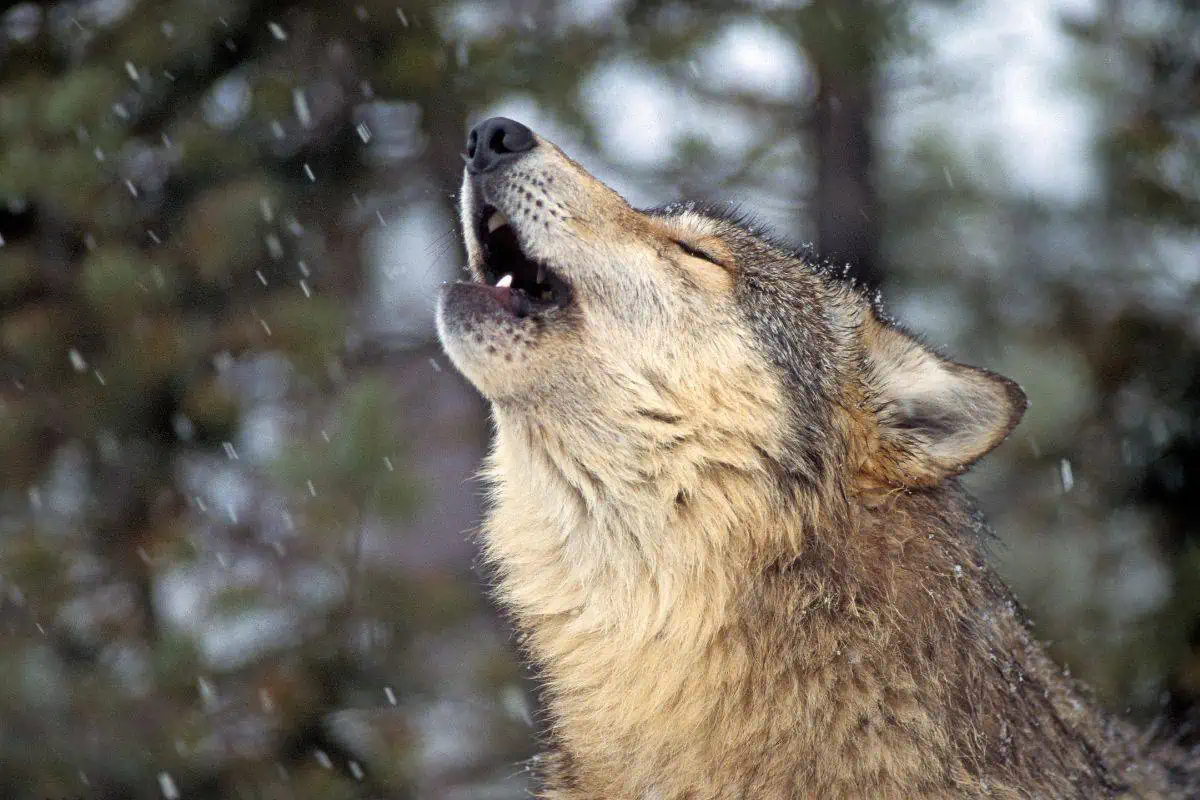Gray wolves, the largest members of the Canidae family, exhibit remarkable adaptability in their habitat choice. These majestic creatures have a circumpolar range across North America, Europe, and Asia.
The versatility of the gray wolf is evident in their ability to thrive in a broad spectrum of environments, from the icy tundras and dense taiga of the northern hemisphere to the arid deserts and lush grasslands.
This extensive distribution highlights their adaptability and underscores the ecological importance of gray wolves in various ecosystems.
Jump Links:

North American Habitats: From Alaska to Yellowstone
In North America, the historic range of the gray wolf covered over two-thirds of the United States. Today, their populations are primarily concentrated in Alaska, northern Michigan, northern Wisconsin, western Montana, northern Idaho, northeast Oregon, and the Yellowstone area of Wyoming.
Additionally, Mexican wolves, a subspecies of the gray wolf, have been reintroduced to protected parklands in eastern Arizona and southwest New Mexico.
Their habitats range from the tundra to woodlands, forests, grasslands, and deserts, each posing unique challenges and offering different resources for these adaptable predators.
European Strongholds: The Carpathians to the Iberian Peninsula
In Europe, gray wolves are spread across a wide area, including both EU countries and non-EU Balkan states, Switzerland, and part of the Carpathian region of Ukraine. The mapping of gray wolf habitats in Europe classifies their presence as ‘permanent,’ ‘sporadic,’ or ‘presence uncertain,’ indicating a varied distribution and population density across the continent.
The permanent populations, forming the core areas of their European range, are mainly found in regions like the Alpine, Baltic, Carpathian, Central European, Dinaric-Balkan, Italian Peninsula, Karelian, NW Iberian, and Scandinavian zones.
These areas are characterized by differing ecological conditions, ranging from mountainous regions to dense forests, which support the diverse needs of the wolf populations.
Population Estimates and Reproduction Dynamics in Europe
Estimating wolf populations is a complex task, involving methods like mark-recapture techniques, snow-tracking, radio-tracking, and wolf-howling to identify reproducing packs. In Europe, the estimation of wolf numbers presents a wide range due to various factors, including prey availability, habitat conditions, and human-wildlife interactions.
Interestingly, only a portion of the wolf population is mature enough for reproduction, influenced by factors like social hierarchy, environmental conditions, and prey abundance.
Most female wolves reach estrus at around 22 months of age, and a significant proportion of the population comprises solitary, transient individuals in search of mates and territories.
Gray Wolves’ Adaptations to Diverse Habitats
Gray wolves have evolved several adaptations that enable them to survive and thrive in diverse habitats. These include their large size (up to 160 cm), with adults weighing between 40 to 175 pounds, and their long legs, which are well-suited for running and traveling long distances in search of food.
They also possess large skulls and powerful jaws to catch and feed on large mammals. Furthermore, gray wolves have keen senses of smell, hearing, and vision, essential for detecting prey and communicating with pack members.
The variation in pelt color, ranging from white to black, provides camouflage and thermoregulation, adapting them to different environmental conditions.
Final Thoughts
Gray wolves exemplify adaptability and resilience in the face of changing environments and human pressures. Their widespread presence across diverse habitats highlights their critical role in maintaining ecological balance.
As apex predators, they influence prey populations and thereby the overall health of ecosystems. Understanding their habitat preferences and population dynamics is crucial for their conservation and the preservation of the delicate balance in the ecosystems they inhabit.
As we continue to study and protect these magnificent animals, their presence serves as a reminder of the intricate connections within nature and the importance of maintaining biodiversity.
